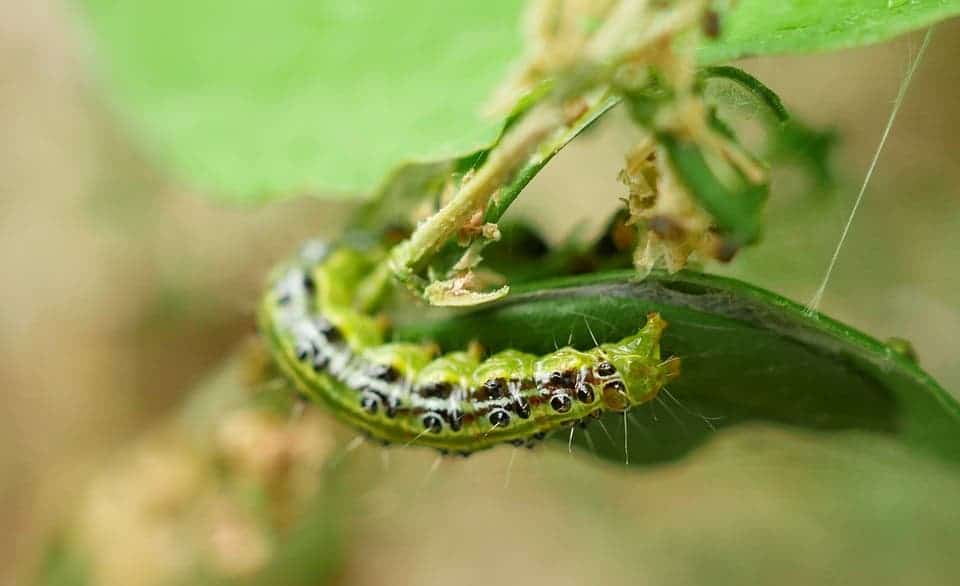Since they were first introduced in 1996, about two billion acres of so-called ‘Bt crops’ have been planted around the world. These biotech crops — most frequently corn, soybean, or cotton — are engineered to contain genes from the bacterium Bacillus thuringiensis that produce proteins toxic to insects. These proteins kill common pests like caterpillars or beetles but are harmless to humans. While this approach has proven successful in improving yield and reducing pesticide use, widespread fears that the Bt proteins might trigger an evolutionary dash for resistance in pests have proven well founded, according to a comprehensive review. Pests around some crops haven’t developed resistance, however, which means there’s reason to believe Bt crops could prove effective for a long time.

The international team of researchers analyzed 36 cases of biotech crops encompassing 15 pest species in 10 countries on every continent except Antarctica. The global data on Bt crop use and pest response suggests that as of 2016, the efficacy of Bt crops was substantially reduced in 16 out of 36 cases, compared to only three such cases in 2005. The pests evolved resistance in only five years, on average.
However, in 17 other cases, the pests did not evolve resistance to the Bt crops, even though some had stayed in place for two decades. The remaining three cases experienced some statistically significant resistance but not nearly as severe as elsewhere and, thus, were classified as ‘early warning of resistance’.
The biotech arms race
Since Bt crops were introduced, scientists have advocated incorporating so-called ‘refuges’ into farmers’ strategy. Refuges are just standard, non-Bt crops that are planted alongside the engineered variety. Pests that attack the refuges are not exposed to the Bt toxins but at some point, they will breed with insects that attack the engineered crops. Due to recessive inheritance, mating between a resistant parent and a susceptible parent will likely yield offspring that can still be killed by the Bt crop.
Computer models have shown that refuges ought to be effective at delaying pest resistance in biotech crops, but their value has proven controversial among academics. In the U.S., for instance, the Environmental Protection Agency (EPA) has relaxed its requirements for plating refuges.
The new review, however, plainly shows that refuges work. Most of the crops that didn’t show signs of pest resistance employed sound refuge strategies.
“Perhaps the most compelling evidence that refuges work comes from the pink bollworm, which evolved resistance rapidly to Bt cotton in India, but not in the U.S.,” said Bruce Tabashnik, a researcher at University of Arizona’s College of Agriculture and Life Sciences and lead author of the new stuy published in Nature Biotechnology.
“Same pest, same crop, same Bt proteins, but very different outcomes,” he added in a public statement.
Southwestern US farmers had an effective refuge strategy while India didn’t — the country has some refuge plating rules, but farmer compliance is low. The latter saw significant increases in pest resistance.
While the study shows pest resistance to Bt crops is evolving rapidly, there are also some encouraging news. The most recent biotech crops produced a novel type of Bt protein called vegetative insecticidal protein (VIP). Previously, all other Bt proteins belonged to a totally different group called crystalline proteins. Since the two groups are worlds apart, cross-resistance between pest is virtually nil, the scientists reported.
Tabashnik says that we’re only beginning to use systematic data analyses to manage pest resilience but, even so, results are encouraging. After all, scientists always expect pests to adapt to whatever we throw at them, be it GM crops or otherwise. “However, if we can delay resistance from a few years to a few decades, that’s a big win,” he underscored.
“These plants have been remarkably useful, and resistance has generally evolved slower than most people expected,” Tabashnik said. “I see these crops as an increasingly important part of the future of agriculture. The progress made provides motivation to collect more data and to incorporate it in planning future crop deployments.”
“We’ve also started exchanging ideas and information with scientists facing related challenges, such as resistance to herbicides in weeds and resistance to drugs in cancer cells,” Tabashnik said.
Scientific reference: “Insect Resistance to Transgenic Crops: Second Decade Surge and Future Prospects,” Nature Biotechnology. DOI: 10.1038/nbt.3974.






